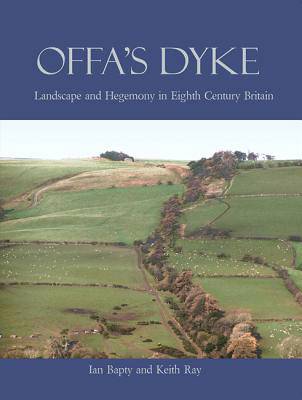
- Afhalen na 1 uur in een winkel met voorraad
- Gratis thuislevering in België vanaf € 30
- Ruim aanbod met 7 miljoen producten
- Afhalen na 1 uur in een winkel met voorraad
- Gratis thuislevering in België vanaf € 30
- Ruim aanbod met 7 miljoen producten
Zoeken
Omschrijving
The massive ancient linear earthwork that provides the sole commemoration of an extraordinary Anglo-Saxon king and that gives its name to one of our most popular contemporary walking trails remains an enigma. Despite over a century of study, we still do not fully understand how or when Britain's largest linear monument was built, and in recent years the views of those who have studied the Dyke have diverged even about such basic questions as its physical extent and purpose.
This book offers a fresh perspective on Offa's Dyke arising from over a decade of study and of conservation practice by its two authors. It explores the specifically Mercian and English context for its creation, and identifies 'political places' along its route that may have preexisted it. As well as reviewing past studies of the Dyke and debates about its character, the authors identify build practices not previously noted. They demonstrate the fundamental uniformity of the design of the earthwork, including in Gloucestershire, and show how it facilitated surveillance of the landscape at key locations. Offa's Dyke is explained as the most dramatic among several devices of hegemony deployed by the Mercian regime of the late eighth/early ninth century, and as the key element in an early Welsh Marches frontier paralleled in Charlemagne's contemporary European empire.
This book offers a fresh perspective on Offa's Dyke arising from over a decade of study and of conservation practice by its two authors. It explores the specifically Mercian and English context for its creation, and identifies 'political places' along its route that may have preexisted it. As well as reviewing past studies of the Dyke and debates about its character, the authors identify build practices not previously noted. They demonstrate the fundamental uniformity of the design of the earthwork, including in Gloucestershire, and show how it facilitated surveillance of the landscape at key locations. Offa's Dyke is explained as the most dramatic among several devices of hegemony deployed by the Mercian regime of the late eighth/early ninth century, and as the key element in an early Welsh Marches frontier paralleled in Charlemagne's contemporary European empire.
Specificaties
Betrokkenen
- Auteur(s):
- Uitgeverij:
Inhoud
- Aantal bladzijden:
- 464
- Taal:
- Engels
Eigenschappen
- Productcode (EAN):
- 9781905119356
- Verschijningsdatum:
- 31/01/2016
- Uitvoering:
- Paperback
- Formaat:
- Trade paperback (VS)
- Afmetingen:
- 185 mm x 246 mm
- Gewicht:
- 1519 g

Alleen bij Standaard Boekhandel
+ 100 punten op je klantenkaart van Standaard Boekhandel
Beoordelingen
We publiceren alleen reviews die voldoen aan de voorwaarden voor reviews. Bekijk onze voorwaarden voor reviews.











